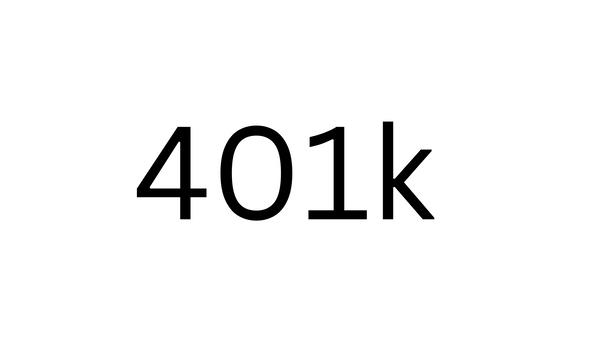
Managing your 401k in a tough market
You should always be actively managing your 401k and now is the perfect time to make adjustments.
DISCLAIMER: I am a licensed financial professional, however the following information is provided for educational/entertainment purposes and is not intended to be investment advice. If you are making an investment or other financial decisions and require advice, please consult a suitably qualified licensed professional.
Around six months ago I called a recession. By definition, two months of negative GDP growth, I was right. Still, the U.S. has yet to truly experience the real impact that I believe we will see in the next 6-12 months. I know of people who’s investment are down by 20% or more. In fact, that is the case for most of the people I talk to. While the markets appear to have stabilized, I believe we are going to see another significant dip that will include an increase in the number of layoffs.
Because I believe another downward move in the markets is coming, I just made some drastic changes to the investment categories that my 401k contributions are going into. I mean drastic. All in hopes of weathering the downturn.
Most people don’t actively manage any of their investments. They tend to set them up and then leave them as is. In fact, most of the financial advisors I know treat their client’s accounts in the same way. Which is one reason I pursued my financial licenses.
One of the benefits of a scheduled investment, like a 401k, is that it occurs each pay period without you having to think about it. Another benefit is that most companies will match a portion of your contributions. So, its like getting free money. The challenge with an automated investment is that it is easy to forget about.
Whether you believe we are going to enter another downturn in the market or not, you should be actively managing your 401k investments.
I’m not going to tell you which investment categories you should consider. Because each person’s risk tolerance is different. If you’d like to work directly with me, then head here to book a free financial review.
What I am going to share with you today is the process I think you should be following, along with some tips that just about everyone should heed.
Review your current 401k structure
Step 1. Review your current 401k setup
The first thing you need to do is evaluate where you are today. Things to consider include:
- Are you contributing to your company’s 401k plan?
Regardless of the market’s performance you should be contributing, particularly to take advantage of any match your company offers. In most instances,
2. Review how much your are contributing.
I recommend contributing the maximum amount that your company will match. If your company will match up to 5% then you should be contributing 5% yourself. Even if your monthly budget is tight, try to cut other expenditures to allow for this.
3. Review your which investment categories you have been investing in.
Most 401k programs have a variety of investment options available to you. Take some time to review which options your contributions are being funneled into.
4. Review how well diversified your 401k portfolio is.
Take a look at your portfolio and see how diversified it is. Most plans are administered by large companies who offer built-in software that can help you build out a diversified approach. Unless you have a lot of experience picking investment categories, I generally recommend letting the software help you determine a strategy.
Future allocations to your 401k
Now that you have a sense of how your current 401k investments are structured it could be a good time to change where your future allocations are directed.
I don’t recommend reallocating the existing dollars in your 401k. Leave them in their current investment categories. They have more than likely already experienced most of the losses they will see and moving the dollars out means you won’t be able to take advantage of any upside when they start to climb again. Definitely don’t withdrawal those funds as you could owe taxes and penalties for early withdrawal.
What you should do is alter where future contributions are invested. Again, if the company managing your 401k offers it, you can use the built in software to make suggestions for you. Even I do this, although I don’t 100% follow its recommendations.
Although I’m not willing to say exactly what investment categories I moved my future contributions into, because it exposes me to liabilities, I will tell you that I have my future contributions going into extremely conservative categories. That includes a large amount into cash and bonds.
Why? To revisit my early points, I believe another dip is coming. If my contributions were going into more aggressive investments where I see losses coming then I’d be out more money. However, by having cash at hand I can invest into categories after those losses occur and take advantage of the upside.
One more note. I’m holding that cash in my 401k because my company still matches my contribution and I get the tax benefits of a traditional 401k, where contributions are pre-tax.